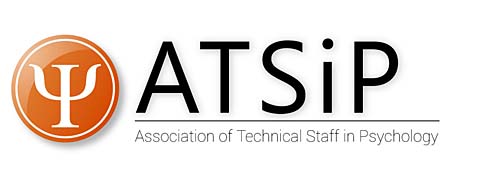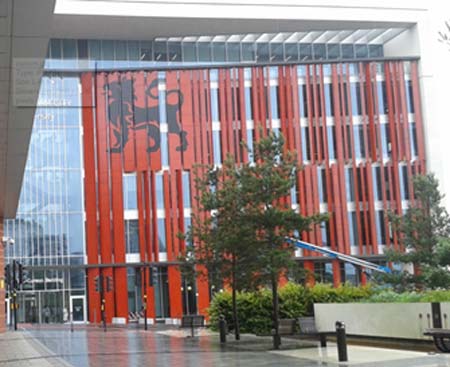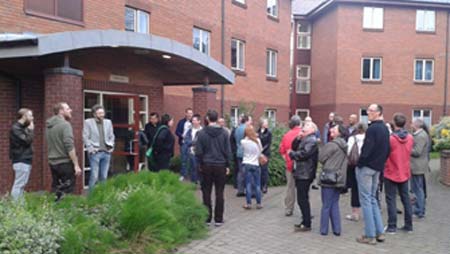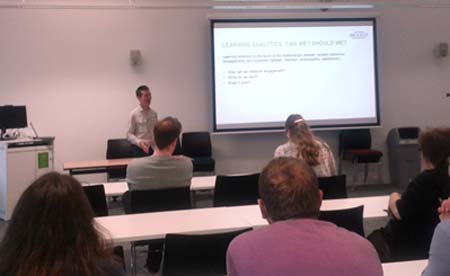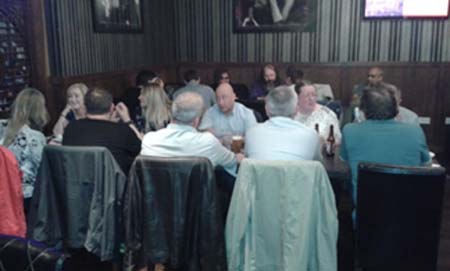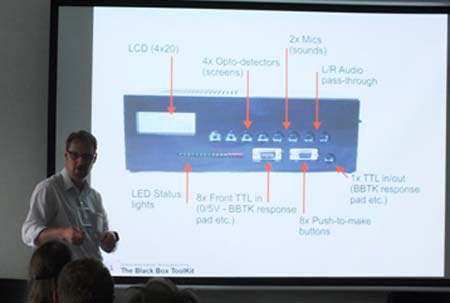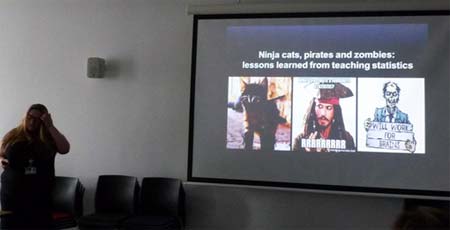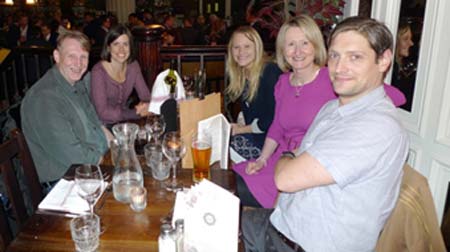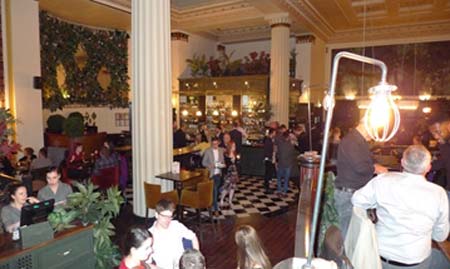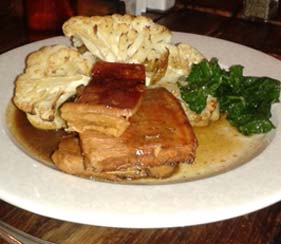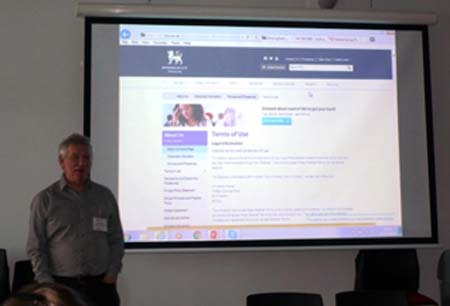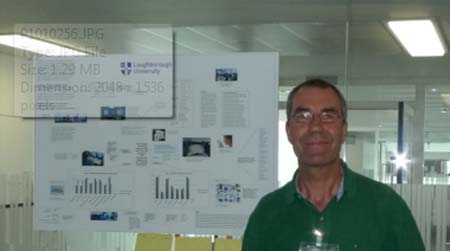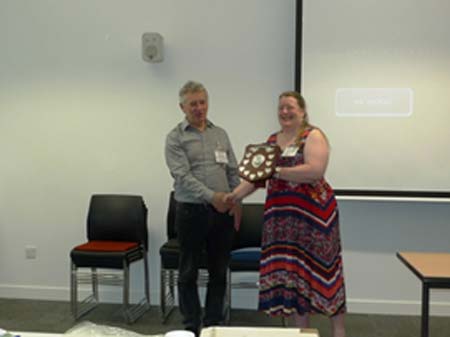|
|
ATSiP ANNUAL CONFERENCE
Birmingham City University Wed 29th June to Fri 1st July 2016 Report by Peter Beaman
|
| ATSIP Birmingham City University Report 2016
Location and accommodation:
ATSIP travelled toBirmingham City University for the 31st Annual Conference. The accommodation was in Halls of Residence.
|
|
This was the first time that ATSiP have had an event in Birmingham and we were certainly well looked after by the School of Social Sciences that included Psychology, Criminology and Sociology. |
|
|
The first talk was by Wakefield Morys-Carter from Oxford Brookes University on ‘Learning Analytics. Can we? Should we? This presentation was concerning using student behaviour to help predict learning outcomes, to help identify students who may withdraw and encourage behaviours that lead to higher performance. The use of VLEs and providing information about individual student’s performance seems a step in the right direction.
|
|
 |
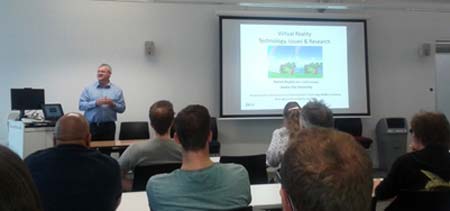 |
The final talk for the afternoon was concluded by Patrick Boylan from Dublin City University on Virtual Reality. The history of VR was eluded to and an overview of research using VR as a pain distracting technique were presented |
Boars Head Worlds Food Buffet a very good first night venue a short walk from the Perry Barr accommodation with many cultural cuisines to try |
Thursday Morning we found that the Breakfast at 8am at the venue E-Syndicate appeared closed but fortunately we were rescued by the staff of the local cafe into the refectory that provided us with rapid full English or Continental (while it still exists?)
|
|
Next we had a fleet of taxis pick us up from the campus accommodation for a welcome coffee and freshly booked pastries at 9.30am. We were then welcomed by the HOD for Psychology Prof Craig Jackson who made us all feel at ease and at home in his work place.
|
The first talk of the day was by Robertino Pereira from Acuity ETS, on Eye tracking Demo and integration possibilities with motion sensors, facial expression analysis, biometrics and EEG. Acuity is the reseller for Tobii and Ergoneers eye tracking systems. This workshop gave a brief demo and overview of both brands which included remote and mobile eye tracking systems. Additionally we were provided a high level demonstration of how these systems can be combined with biometric sensors such as GSR or EEG as well as with facial expression analysis software or motion sensors. It was also said that Acuity can provide a hands-on session on eye tracking in VR. After the general demo and overview the company was happy to provide a hand-on session with the kit and do a Q&A session answering more detailed questions and helping with ongoing research projects. |
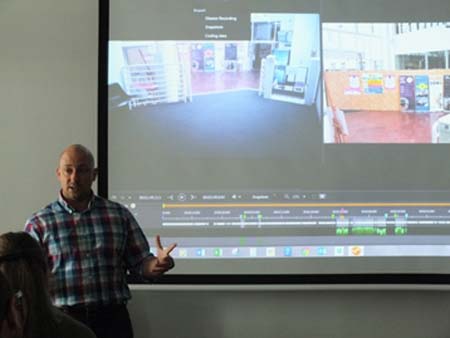 |
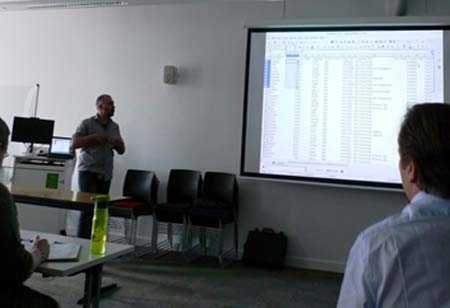 |
The second talk was by Yiannis Argyropoulos from Heriot-Watt University in Edinburgh on An Introduction to AWK programming language. We were informed that AWK is a powerful programming language when it comes to data manipulation, data extraction and reporting. It typically comes pre-installed with *nix systems but it can also be installed in Windows machines making it a highly portable language. In this presentation Yiannis talked about the syntax and basic commands of awk (with examples) and how awk can be used in real life scenarios like sorting out email addresses from webpages which proved a useful tool.
|
A tour of the dept. took place next and we were divided into 2 groups and shown round by Neale and Ojay. The building is impressive with its own inbuilt coffee station and dedicated BPS Lab for those students on the accredited BSc Psychology degree course, CCTV lab too. |
 |
|
|
Next we had a lovely lunch in the dept followed by a photo shoot of delegates outside the building. There was also the opportunity to meet the vendors and suppliers in the dept and networking opportunities to |
 |
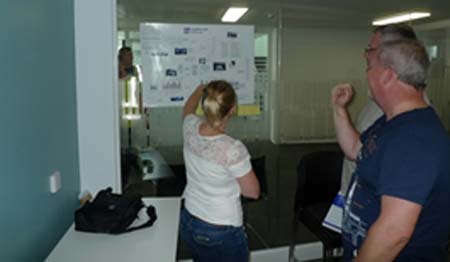 |
|
|
Next on the programme talks was Richard Plant The Black Box ToolKit Ltd |
A coffee break followed and then Dr Emma McDonald from BCU
|
|
The AGM followed the last talk which lasted about 75min. Reports (Treasurer, Chair) and previous minutes from last year’s conference discussed. AOB and next year’s conference venue highlighted.
The conference meal was at the Lost and Found in central Birmingham. We had a special seating area in this very old Victorian building as a former banking hall with interesting bric-a-brac and a raised eating area so you can survey the multitude of mostly young-trendy drinkers below. |
|
 |
|
|
|
The next morning at 8am we had a better organised breakfast as the main part of the E-Syndicate was up and ready for action and therefore Full English was available and most delegates made it even if a few had ventured into the centre after the meal finished at the Lost and Found. Taxis picked us up after breakfast to take us to the Curzon Building where we had a nice welcome cup of tea or coffee before starting the final talks of the conference. |
|
|
The first one was by Noel Taylor University of Hertfordshire called Using Qualtrics in a Clinical Trial. Noel described how the University of Hertfordshire has used Qualtrics to mount a pilot study for a full scale Clinical Trial. Using Qualtrics saved the department the commercial fees of over $25,000 required to implement the rigorous randomisation procedure required by the trial. The trial has very complex deployment requirements and using Qualtrics enables great flexibility. The talk touched on the use of some of Qualtric's less documented features, as well as exploring the drawbacks of this method. |
| The next talk was by peter Beaman which was a Round Table discussion about issues pertaining to job roles/duties/professionalism, and he alluded to his recent work with students and the profiling of psychology technician role and BPS awareness. Peter had a poster which showed the main dimensions of a technicians characteristics and attributes as seen by students and how these could impact on the student learning experience. |
|
|
The final talk was by Martyn Atkins University of Plymouth, called Strike a Pose" - Static & Continuous Gesture Recognition with Microsoft Kinect v2 which required a demo and PC software to demonstrate the software. Martyn described the Microsoft Kinect v2 sensor as used for gaming with the Xbox one also has powerful scientific research applications. This freely available Software Development Kit (SDK) contains powerful free software tools, a programming API and a machine-learning based gesture recognition engine. For little initial cost (circa $200) you can connect the sensor to a PC to track 3D skeletal data and recognise static" body poses as well as continuous gestures (e.g. golf swings) in real time. His live demonstration using volunteers from the attendees covered the steps involved to build a gesture recognition database to measure static poses (sitting and standing) and continuous gestures (standing up from sitting). Finally, a working example of an active research application built using the SDK / API with Visual Basic was also demonstrated. The application uses a gesture database of kicking responses and will be used to illustrate how to programmatically access gesture recognition and 3D skeletal data in bespoke software |
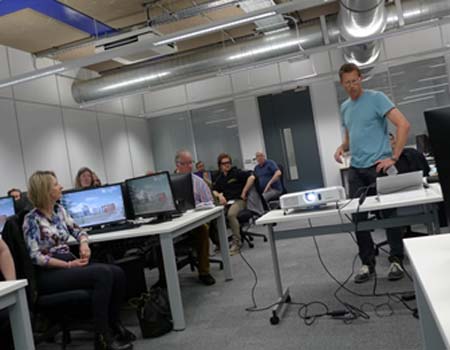 |
|
The Keith Nicholson Prize was awarded this year to the presentation by Noel Taylor on Qualtrics.
After the last talk we had lunch with those delegates not in a rush to leave for planes, trains and cars and took our farewells.
Peter Beaman |
|
